Since graduating from the Tashkent State Institute of Arts, Bobur Ismailov took off like a shooting star and has already established himself as one of the most original artists to come out of Uzbekistan in the last few decades. Painter and philosopher, illustrator and theatre artist, teacher and author of many successful artistic projects, Ismailov creates works that resonate with the human psyche, a conglomerate of beauty, love, sorrow, dreams, stories and laughter, a place where the modern age overlaps with archetypal symbols.
Son of a film director, Ismailov grew up in a creative environment. After graduating from the Benkov State College of Art, Tashkent, he went on to study at the State Institute of Fine Arts in Tashkent and soon joined the Creative Union of Artists of Uzbekistan.
Initially taking the art world by storm with his colourful canvases full of carnival atmosphere, a riot of details and distinct geometric forms, the young artist was already on the path of constant evolution. His work shows great variety as he flows over the boundaries of genre – theatre, cinema, painting, design, graphics, video art – and although he is prolific, his works have an unmistakable reflective, unhurried quality and impeccable composition.
In the words of Lola Karimova-Tillyaeva, long-time friend and founder of the Karimov Foundation, “His works touch the impenetrable depths of human psyche, presenting a blend of finesse where ancient culture merges with modernity. Once seen, Bobur’s works stay with us for ever; they leave an indelible impression, providing us with images and stories to ponder for a long time to come.”
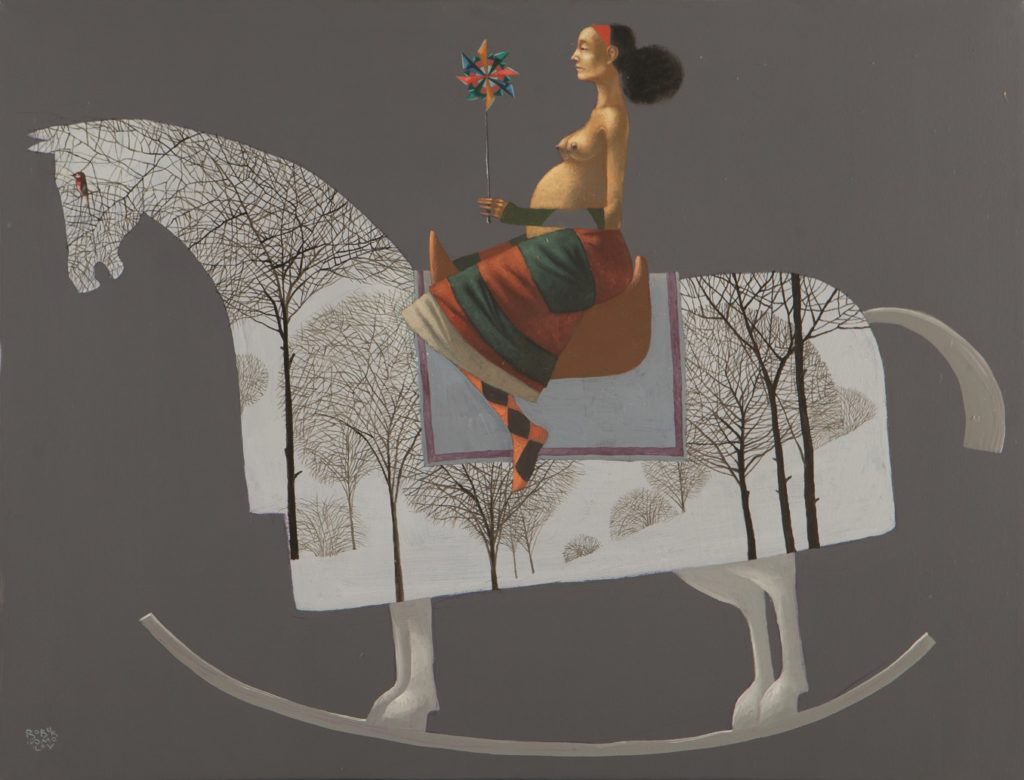
Early Works
Unlike many Central Asian artists, Ismailov did not draw on classical Eastern poetry as inspiration for his early works, but on scenes, books, and films from his childhood. Drawing also from his experience in theatre studies, Ismailov creates a theatricalised world with a carnival atmosphere. These bricolage canvases are filled with a tumult of shapes, forms and colours, and our eye roams freely from one image to the next; as in the theatre, the story unfolds… Sometimes referred to as his carnival pieces, it is perhaps here that the influence of theatre is felt most keenly – Ismailov’s scenes seem to be suspended in space, while theatrical masks, images and costumes abound, reflecting this modern artist’s take on an eternal contradiction: the secret sorrow of the clown hidden behind showbiz glitter. These popular paintings have a sharp but poignant irony and a whimsical aspect unusual in post-modernist works. They provide a small, confined space between myth and reality, and our attentions slips from the limits of this life, sliding between modernity and ancient history.
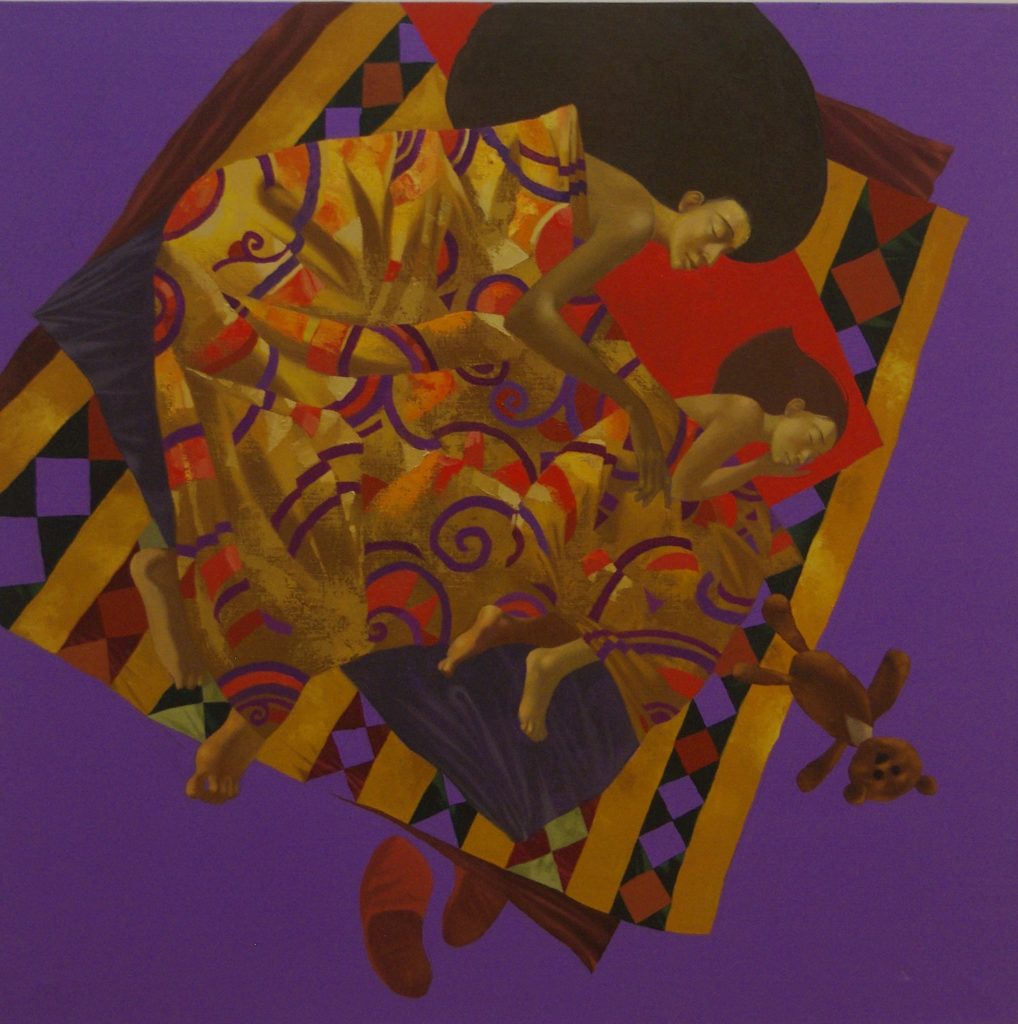
Early Heroes
Exploring techniques borrowed from theatre – lighting, stage sets, symbols, masks – allowed Ismailov to continuously develop his potential as an artist. In marked contrast to the crowded bricolage canvases, the evocative simplicity of his laconic compositions provides the backdrop or stage set for his recurring hero – often seen lost in thought by a window, alone, in darkness or afloat in this strange world we call reality. Yet these paintings are far from morbid. Rather, his heroes are depicted deep in concentration, almost contemplative in their otherness, reminiscent of profiles on frescoes.
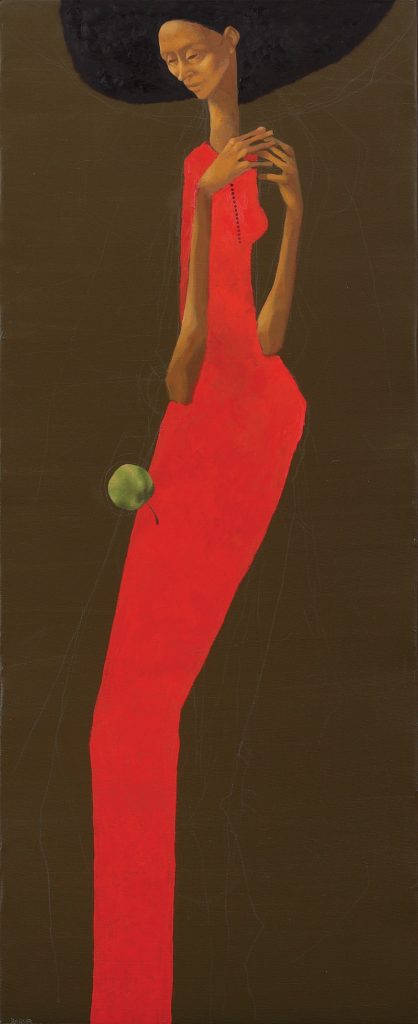
Use of Colour
Ismailov also draws on the metaphysical potential of colour in his quest. Reds and violets prevail in his early works, plus the hidden energy of ochre. With its magnetising power, red is the perfect backdrop for his striking, elegant forms and clear lines, while contrasting carnival violet both attracts and repulses, a characteristic Ismailov uses to dramatic effect.
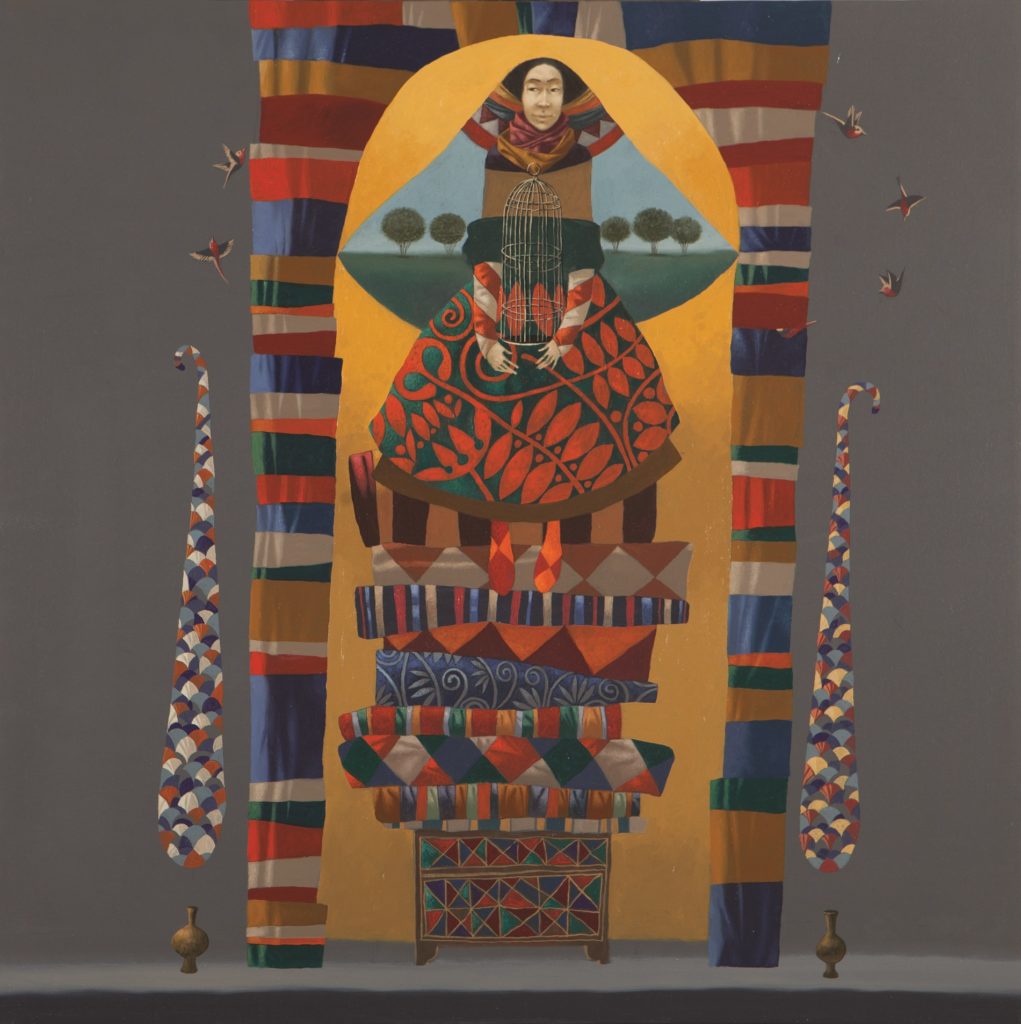
But as we have seen, Ismailov is always pushing the limits, exploring new techniques as well as his own artistic potential. The rich colours of his earlier works give way to simple, almost monotone canvases with subtle colour nuances. This comes to the fore in his solo exhibition Mots (Paris, 2013) where we see a more abstract side to his work. The silence, clarity and purity of the background combined with decorative detail and Ismailov’s impeccable sense of composition throw up new questions on the role of colour, form and space, clearly establishing Ismailov as an artist who refuses to be conditioned by so-called eternal truths but instead constantly seeks to evolve.
As art historian Victoria Erofeeva puts it: “By renouncing bright colours, illustrative traits and carnival imagery, Bobur Ismailov remains alone with the imagery conjured by his imagination, tossed down onto black canvases not covered up by colour.”
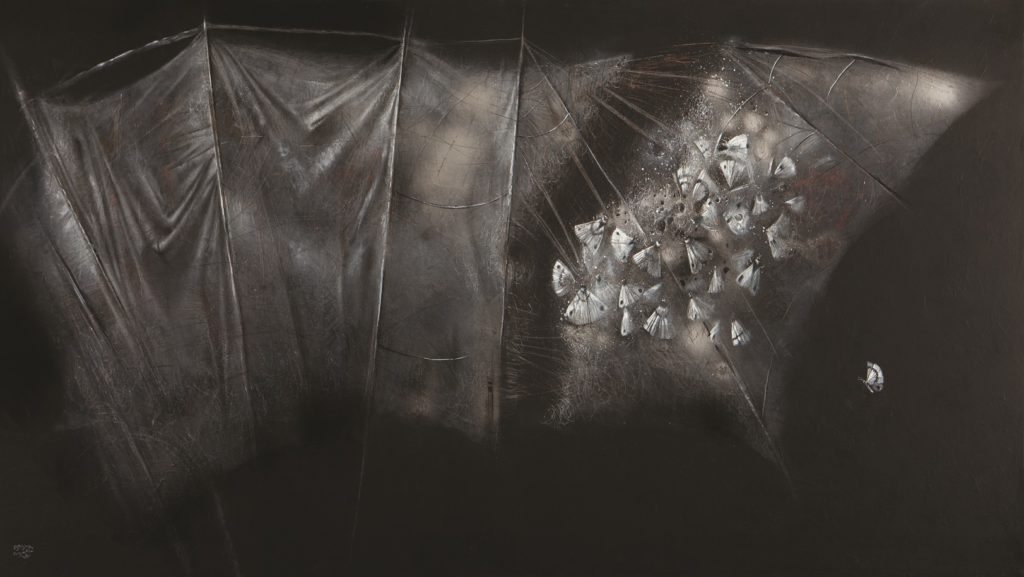
Recent Works
This is true of Ismailov’s latest works, too, where he experiments with the minimalist technique in black and white. While his white compositions have an otherworldly air, creating a mood beyond time, it is an atmosphere of pensive, almost brooding, quietude that prevails in the ‘black canvases,’ as the artist himself calls them. Here we can appreciate the artist’s Oriental precision, found also in his graphics.
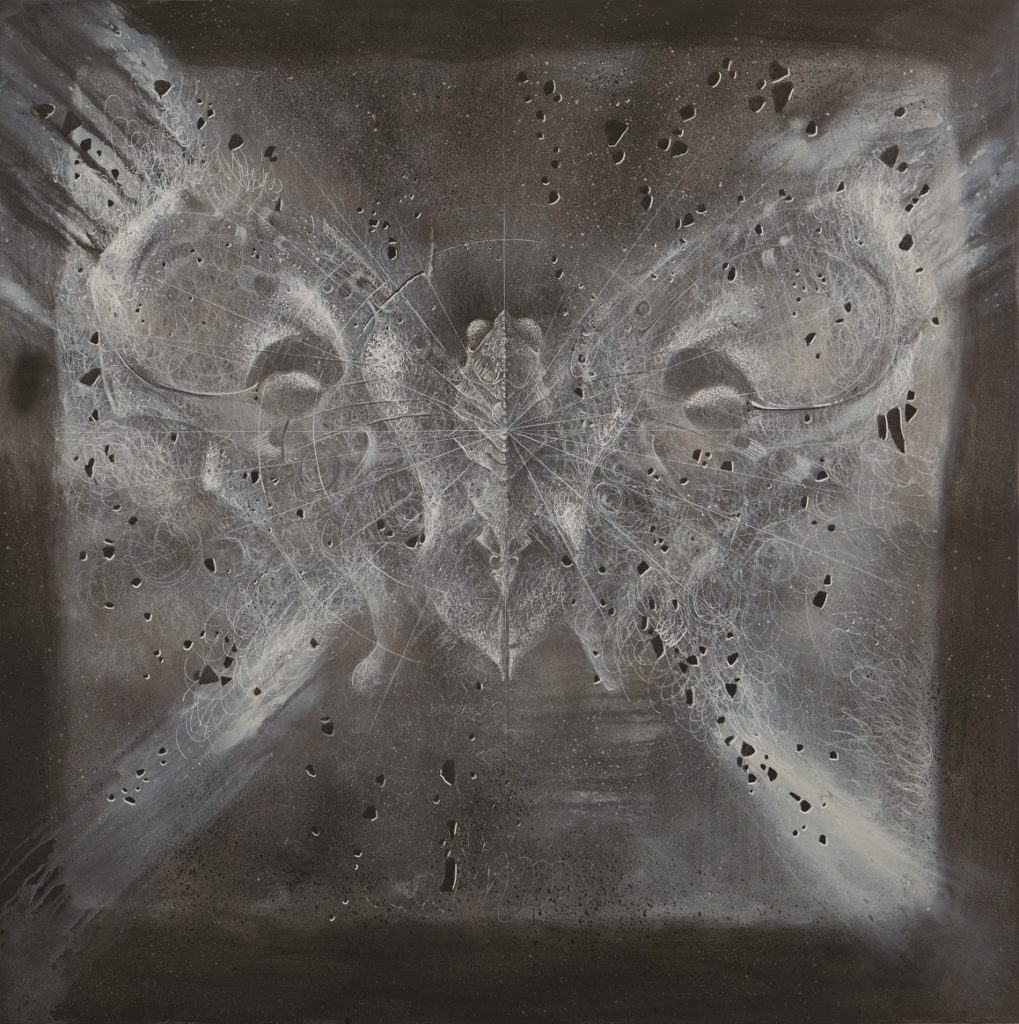
When discussing the reasons behind this shift, Ismailov notes that forsaking intricate details and abandoning a profusion of colour allows him to concentrate on what is most important, to depict his images in the most laconic and expressive way. And indeed, in his latest exhibition, Narratives (Tashkent, 2018), the artist relies on his personal interpretation of the age-old subjects humankind has pondered for centuries. Reinterpreting biblical themes, Sufi parables, ancient myths, or studies on archetypal topics such as mother and child, life and death, love and faith through the prism of the 21st century artist’s perception, Ismailov confronts the viewer with daring, sometimes even startling images. In his bold use of allegory, irony, and personal association, we see Ismailov striving towards a personal interpretation of his subjects. And the result is dramatic.
Video Art
Ismailov has taken part in Signs of the Times international modern art project, and also Litzo (face), in Berlin, Paris and Madrid.
This interaction with film is evident in a new stylistic device for his canvases, too. In recent pieces he introduces a new technique, imitating X-ray images with striking effect. This approach is completely new to Ismailov’s work, lending it a certain frankness that opens out the image even more fully.
Bobur Ismailov’s works are held in the Gallery of Visual Arts of Uzbekistan, the Auberge Ravoux – the House of Van Gogh in Auvers-sur-Oise (France), the Gallery of Modern Art of Azerbaijan, and the Mardjani Foundation (Moscow, Russia) as well as in private collections throughout the world.

